West Nile Virus
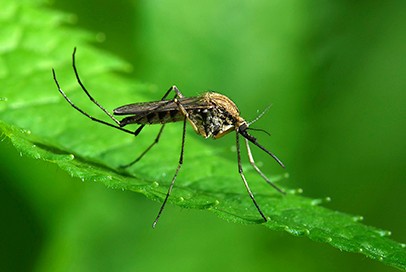
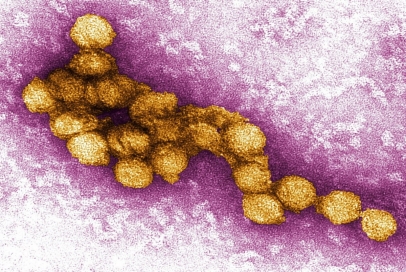
West Nile virus (WNV) is the most common of several mosquito-borne viruses in the United States that can infect people. The virus exists in nature primarily through a transmission cycle involving many different species of mosquitoes and birds. Mosquitoes become infected with WNV when they feed on WNV infected birds.
To submit dead crows or blue jays for WNV testing, contact your local health department.
Most people that are infected with WNV by the bite of an infected mosquito will have no symptoms; however, approximately 20 percent of the people that are infected may experience a range of flu-like symptoms, and less than 1 percent of people that are infected will develop severe illness. As with any disease, the public should respond appropriately with increased awareness of WNV and practicing personal protective measures when exposed to mosquitoes.
For more information about this disease, visit the CDC's West Nile virus home page.
The gradient on this map refers to average WNV incidence rates for each county in Tennesee from 2013-2023, which was calculated using county population data from the 2020 U.S. Census.
In 2023, WNV activity increased as compared to previous years, with a total of 9 human cases. Five of these cases occurred in Shelby County, and single cases also occurred in Davidson, Hamblen, Rutherford, and Williamson Counties.
There were also 1 WNV positive equine case in 2023, which occurred in Gibson County. WNV positive mosquito pools were detected in all 3 counties where mosquito trapping was conducted; Davidson, Shelby, and Knox Counties.
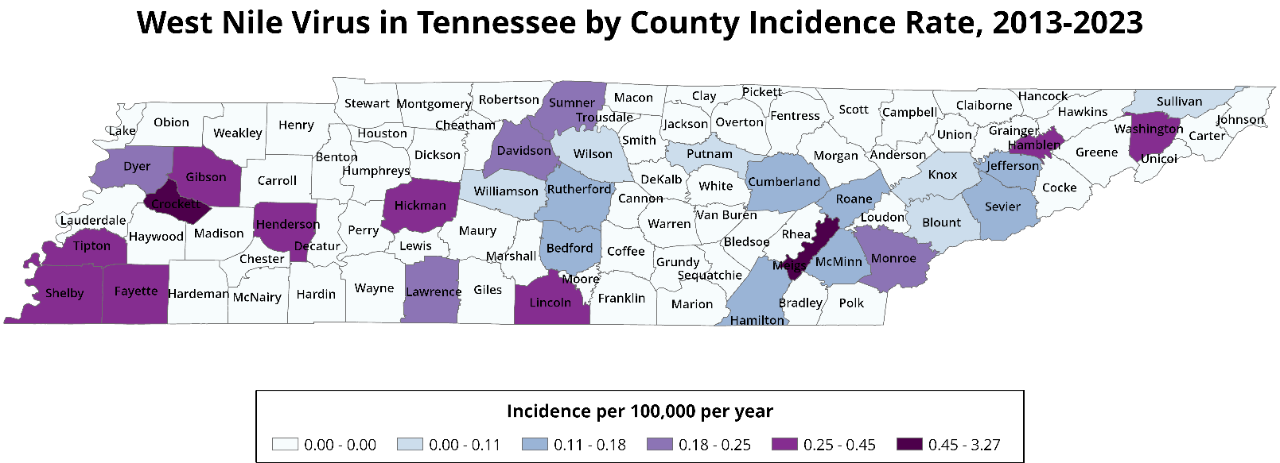
In Tennessee, illness onset for cases of WNV is mainly reported in the second half of the year. The number of reported WNV cases is lowest in the winter (December-March), slightly increases in the late spring to mid-summer (April-July), peaks in the late summer (August-September), and then gradually declines through autumn (October-November).
Signs and symptoms of WNV typically begin 1-2 weeks after being bitten by an infected mosquito. Late spring through mid-summer is the time of year when Tennesseans are most at risk for contracting WNV.
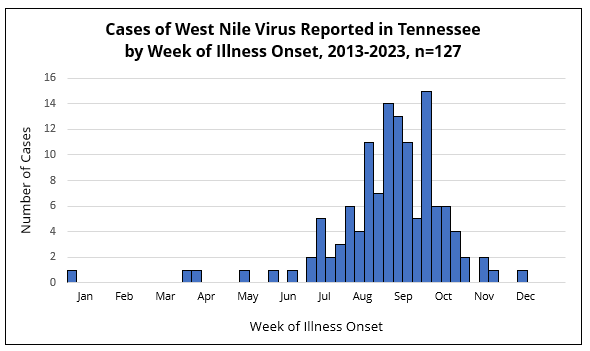
Anyone who spends time outdoors in Tennessee is at risk of contracting WNV. However, persons over 50 years of age are at highest risk of developing the most severe form of the disease, and persons over the age of 70 with pre-existing health problems are at greatest risk for death.
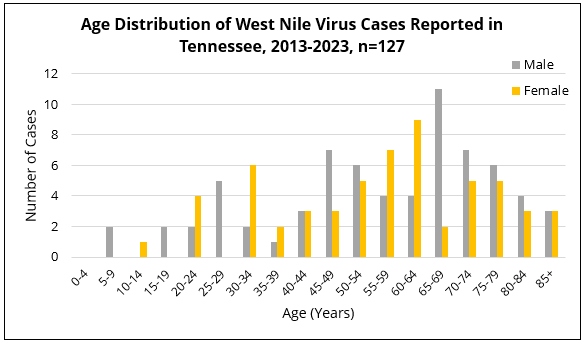
In regards to trends over the past decade, case numbers for WNV have risen in 2023, compared to recent previous years. The dip in cases seen in 2020 can be identified in vector-borne diseases across the board during that year, likely due to a number of factors surrounding the COVID-19 pandemic.
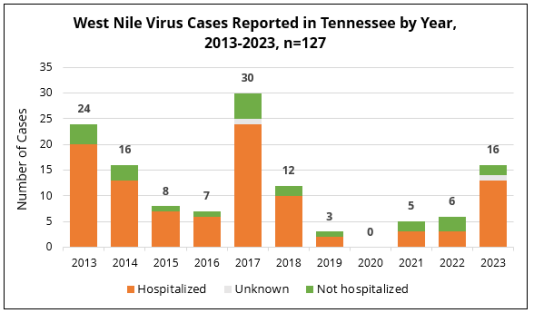
Most people infected with WNV do not devleop any symptoms. About 1 in 5 people who are infected will develop a mild febrile illness, which includes a fever in addition to one or more of the following symptoms:
- Headache
- Body aches
- Joint pains
- Vomiting
- Diarrhea
- Rash
- Fatigue and weakness lasting for weeks or months
About 1 in 150 people who are infected develop a severe illness affecting the central nervous system, such as encephalitis (inflammation of the brain) or meningitis (inflammation of the membranes that surround the brain and spinal cord). Symptoms of severe illness include:
- High fever
- Headache
- Neck stiffness
- Stupor
- Disorientation
- Coma
- Tremors and/or convulsions
- Muscle weakness
- Vision loss
- Numbness and/or paralysis
For more information, see the CDC's WNV Symptoms, Diagnosis, & Treatment web page.
WNV is diagnosed by a healthcare provider, who can order blood tests to look for evidence of WNV infection should you begin to experience the signs and symptoms listed above.
For more information, see the CDC's WNV Symptoms, Diagnosis, & Treatment web page.
| Year | Human | Horses | Birds | Mosquito Pools |
|---|---|---|---|---|
| Positive | Positive | Positive | Positive | |
| 2000 | 0 | 0 | 0 | 0 |
| 2001 | 0 | 1 | 46 | 0 |
| 2002 | 56 | 141 | 823 | 307 |
| 2003 | 26 | 103 | 275 | 308 |
| 2004 | 14 | 15 | 34 | 405 |
| 2005 | 18 | 7 | 12 | 574 |
| 2006 | 22 | 8 | 1 | 626 |
| 2007 | 11 | 4 | 7 | 600 |
| 2008 | 19 | 6 | 3 | 658 |
| 2009 | 8 | 5 | 1 | 488 |
| 2010 | 4 | 3 | 0 | 403 |
| 2011 | 18 | 3 | 0 | 995 |
| 2012 | 33 | 6 | 6 | 916 |
| 2013 | 24 | 4 | 1 | 824 |
| 2014 | 16 | 0 | 0 | 728 |
| 2015 | 8 | 1 | 0 | 694 |
| 2016 | 7 | 0 | 0 | 776 |
| 2017 | 32 | 3 | 32 | 1671 |
| 2018 | 13 | 12 | 2 | 1119 |
| 2019 | 4 | 1 | 0 | 488 |
| 2020 | 0 | 0 | 0 | 725 |
| 2021 | 5 | 2 | 0 | 666 |
| 2022 | 6 | 1 | 0 | 288 |
| 2023 | 16 | 2 | 2 | 1238 |